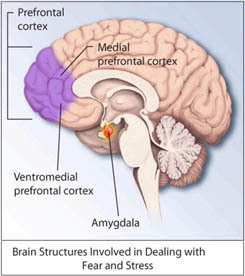
Generalized Anxiety Disorder, GAD, is an anxiety disorder characterized by chronic anxiety, exaggerated worry and tension, even when there is little or nothing to provoke it.
Signs & Symptoms
People with generalized anxiety disorder (GAD) go through the day filled with exaggerated worry and tension, even though there is little or nothing to provoke it. They anticipate disaster and are overly concerned about health issues, money, family problems, or difficulties at work. Sometimes just the thought of getting through the day produces anxiety.
GAD is diagnosed when a person worries excessively about a variety of everyday problems for at least 6 months. People with GAD can't seem to get rid of their concerns, even though they usually realize that their anxiety is more intense than the situation warrants. They can't relax, startle easily, and have difficulty concentrating. Often they have trouble falling asleep or staying asleep. Physical symptoms that often accompany the anxiety include fatigue, headaches, muscle tension, muscle aches, difficulty swallowing, trembling, twitching, irritability, sweating, nausea, lightheadedness, having to go to the bathroom frequently, feeling out of breath, and hot flashes.
When their anxiety level is mild, people with GAD can function socially and hold down a job. Although they don't avoid certain situations as a result of their disorder, people with GAD can have difficulty carrying out the simplest daily activities if their anxiety is severe.
GAD affects about 6.8 million adult Americans1 and about twice as many women as men. The disorder comes on gradually and can begin across the life cycle, though the risk is highest between childhood and middle age. It is diagnosed when someone spends at least 6 months worrying excessively about a number of everyday problems. There is evidence that genes play a modest role in GAD.
Other anxiety disorders, depression, or substance abuse often accompany GAD, which rarely occurs alone. GAD is commonly treated with medication or cognitive-behavioral therapy, but co-occurring conditions must also be treated using the appropriate therapies.
 Print
Print Email
Email







